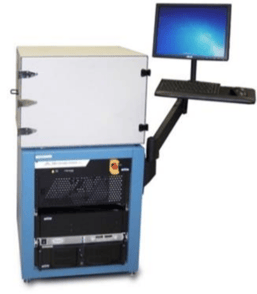In the seventies, noise pollution dominated social discussions. Well, today it's back as radio frequency pollution on our manufacturing floors, as many new devices across industries now have radios. Sure, the arbitration and communication protocols help the end product endure radio frequency noise in the real world. Unfortunately, products tested in the manufacturing environment are often not yet fully assembled. As such, these products are more susceptible to other nearby radio sources, which could have adverse effects on communication, power measurements, and more.
Radio Frequency Interference
As we all use Zoom, Teams, Skype, and WebEx, we experience squeaks, pops, lost audio, and some unbearable sounds coming through our online calls. We can’t blame them all on our kids or puppies in the background. These are real indicators of RF interference. While the source of much of this interference is from hardwired electrical causes, some are related to Radio Frequency Interference (RFI). And RFI is everywhere.
For 85 years, the Federal Communication Commission (FCC) has assigned and managed the radio frequency spectrum in the United States. The FCC works with other countries and their regulating agencies to prevent overlap of communication across the RF spectrum. The radio band is extensive, to say the least, ranging from 30 HZ to 300 GHz. Management of the RF spectrum is paramount as more and more devices are using the invisible spectrum.
The Source of RFI
To understand the source of RFI, let's start at the basics of RF communication. Our mobile phone is a transceiver —it transmits and receives information in the form of an RF signal. Our phone has an antenna suitable to receive transmitted RF information from another RF source. The RF energy impinges on the antenna, and the information is amplified, decoupled from the carrier RF wave, and processed into information we can comprehend. Simple!
RFI is RF energy which finds an unintended antenna and amplifier. Typically the coupling of power to the amplifier through the antenna is refined. But often unexpected RF energy is also captured and amplified and can cause the clicks and squeals we have all experienced. Any nearby radio may be transmitting on an interfering part of the RF spectrum. In the open world, this is mitigated by design, but on the manufacturing floor, we see this often. We may be experiencing products competing for the same RF space in manufacturing – because we’re building many of the same product daily and the products are in an unfinished state.
RFI Protection
To control RFI, products are designed with metal shields, conductive gaskets, and electromagnetic interference (EMI) paint. The purpose of these bill of materials (BOM) items is to prevent the escape of emissions and to protect from the ingress of radio energy, which may adversely impact the product functions. An RFI shield may be a metal cover over a radio on the circuit board. The metal cover can surround the whole product, encapsulating multiple circuit assemblies and interconnects or it can simply be a metal foil wrapping around a key electrical circuit. RFI shielding can even be a layer of metalized paint covering the inside of a plastic product enclosure.
Designers are on a constant lookout for shielding requirements. Products must be tested for susceptibility and transmission of RF energy. As the number of connected devices increases, each new identified RF band fills with more and more traffic and a higher chance for interference.
RFI in Manufacturing
Unfortunately, in the manufacturing environment, the design does not contain the problem. During manufacturing, the products are often only partially assembled during test activities. Protective RFI covers may not be in place the first time a product radio is powered. Emissions may radiate RF energy across the manufacturing floor and adversely impact other products during testing, causing improper operation and a false fail. So what can be done?
Challenges to RF Shielding
By far, applying shielding to a test fixture is the most common and successful solution to RF noise in the manufacturing environment. Shielding is most often a custom box fashioned around the mechanical components of the test fixture. It must “contain” the product as well as wiring, clamps, and various other components on the test fixture. It must utilize appropriately thick metals and seals to keep RF energy in or out. Shielding is often made of many pieces fastened together. Special attention needs to be given to each penetration of the shield. Holes for cables and such must prevent leakage points for RF energy.
Using shields alone adds a level of complexity to a test fixture, and additional challenges often include the following:
- Shields block visibility of the product during test. The operator likely has to scan the product barcode, for example, before the shield is closed. If a product display must be viewed during the test, the test may need to be stopped, the cover opened so the operator can view the display.

- The visual indication of a failure (e.g. smoke) may not be possible.
- The added weight of fabricated shields can make the fixture less manageable.
- The addition of components during the fixture design and fabrication can increase the test solution cost.
- When testing within a shield, the expected results may be different than open-air test results. Near-field measurements are often adversely affected by shielding. This situation makes the expected results and the actual manufacturing results difficult to correlate.
Benchmark's test developers use their experience to apply the right methods during manufacturing test for each product to suppress the adverse effects of a noisy RF environment. New methods are being investigated and implemented every day. RF noise may always be in the background of most environments, but it is an important nuisance that needs to be given due attention during manufacturing and testing to ensure proper functionality in the real world.
